25 Stunning Coastal Villages Where Colorful Houses Meet the Sea
Forget your muted landscapes! Prepare to feast your eyes on a world painted in vibrant hues, where coastal villages explode with color against the endless blues of the sea. These aren't just pretty postcards; they're living stories etched in every brightly painted wall, where tradition dances with the rhythm of the waves. We've scoured the globe, expanding our palette to bring you 25 of the most breathtaking seaside havens where colorful houses aren't just a visual treat—they're a vibrant language of heritage, a beacon for returning sailors, and a joyful celebration of life itself. From the sun-drenched shores of the Mediterranean to the hidden gems of Scandinavia and beyond, prepare to be captivated by these living canvases where community and the coast collide in a symphony of color. Get ready to journey through some of the most spectacular and soul-stirring landscapes on Earth.
1. Burano, Italy – A Venetian Masterpiece
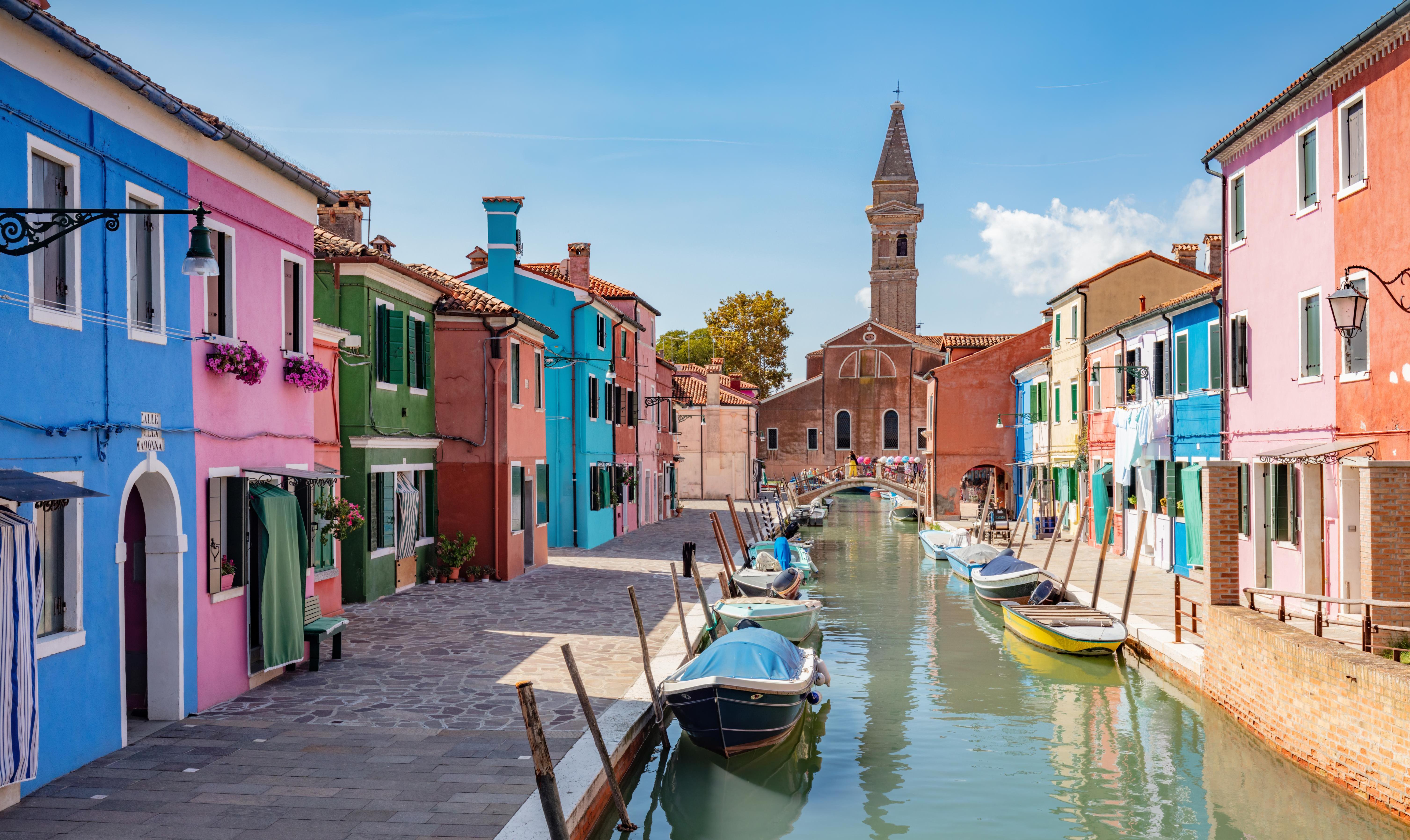
Burano, a small but enchanting island in the Venetian Lagoon, is one of the most colorful places in the world. Known for its brightly painted houses that reflect in the serene canals, this fishing village feels like a fairytale town brought to life. The tradition of painting homes in candy-like hues of pink, orange, blue, and green dates back centuries when fishermen needed a way to identify their homes through the thick Venetian fog. Over time, the tradition evolved into a cultural signature, turning Burano into a living canvas of color and history. But the charm of Burano is not just in its vibrant facades—the island is also famous for its lace-making tradition, which has been practiced here since the Renaissance. As you stroll through its winding streets and cross its tiny bridges, you’ll find artisans weaving intricate lace patterns by hand, preserving a centuries-old craft. Regulations today strictly control the color palette, ensuring that Burano remains a rainbow of harmony rather than a chaotic mix of shades. Visitors can explore local workshops, waterfront trattorias serving fresh seafood, and open-air markets filled with handmade crafts.
2. Cinque Terre, Italy – The Cliffs of Color
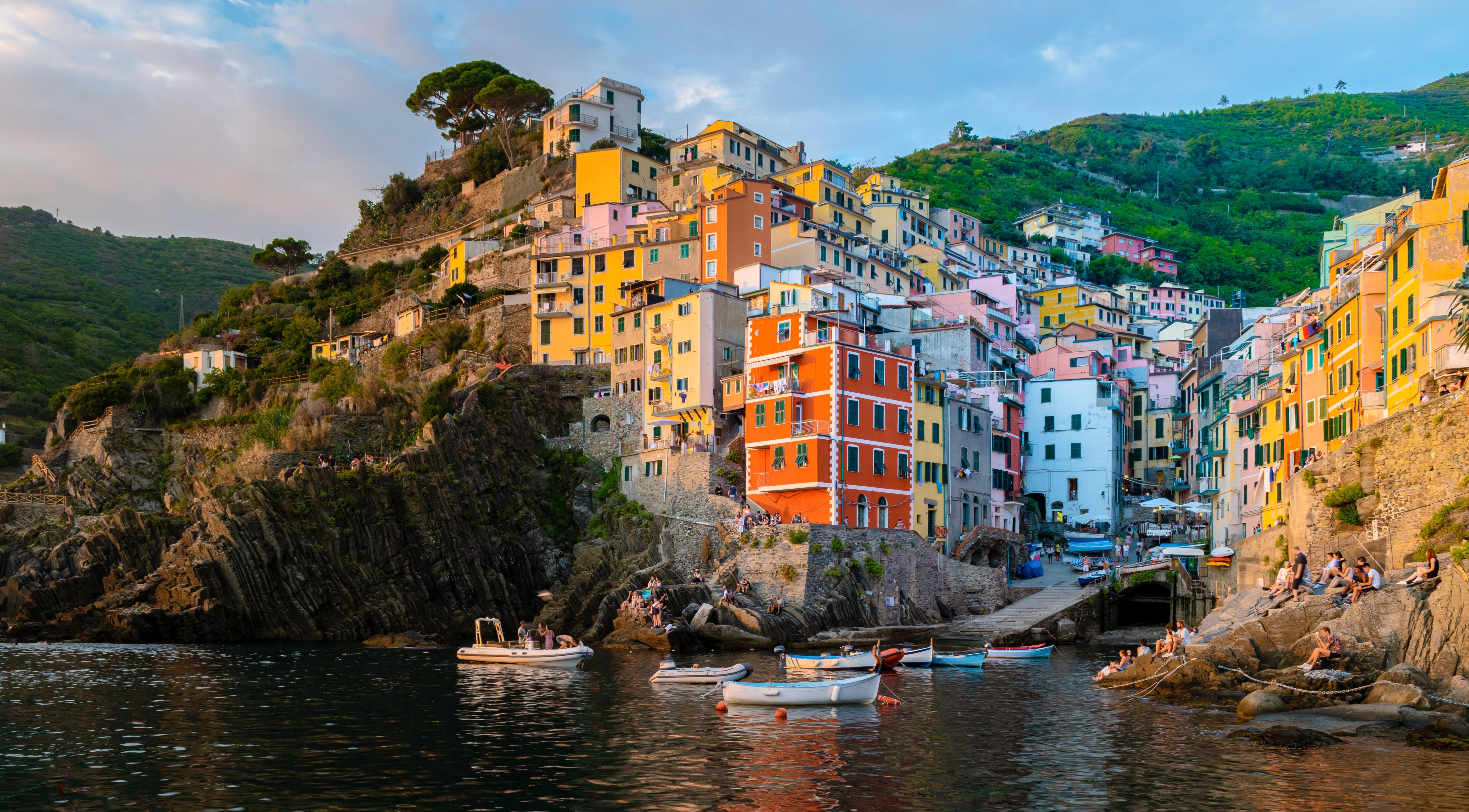
Few places in the world are as breathtakingly picturesque as Cinque Terre, a collection of five villages—Monterosso, Vernazza, Corniglia, Manarola, and Riomaggiore—clinging dramatically to the rugged Ligurian coastline. These iconic homes, painted in sun-kissed shades of yellow, coral, and terracotta, were originally designed to stand out from the sea, helping returning fishermen spot their village from afar. Today, Cinque Terre is a UNESCO World Heritage Site and remains one of Italy’s most visited destinations. The best way to experience its charm is by hiking the scenic trails that connect the villages, where breathtaking coastal views unfold at every turn. Alternatively, boat rides offer a stunning perspective, revealing how these vibrant houses seem to defy gravity on the steep cliffs. Each village has its own unique charm—Riomaggiore’s winding alleys lead to scenic harbor views, Manarola is famous for its postcard-perfect sunsets, and Vernazza boasts a charming piazza filled with seafood trattorias. Corniglia, the only village perched atop a hill rather than directly on the water, offers panoramic views of the Mediterranean, while Monterosso is known for its sandy beaches and lemon groves.
3. Nyhavn, Denmark – Copenhagen’s Most Photogenic Waterfront
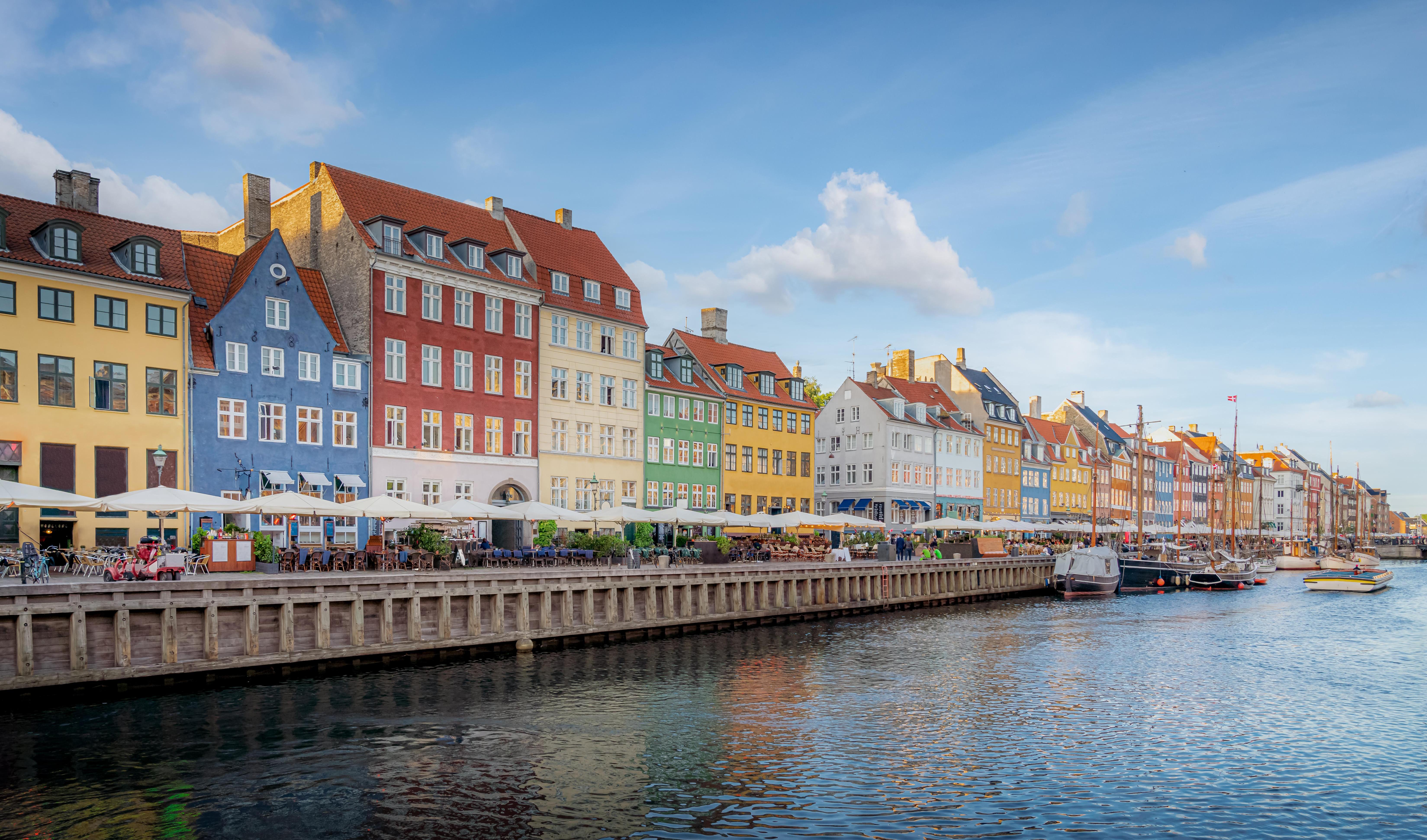
Few places capture the romantic charm of Copenhagen like Nyhavn, the city’s iconic waterfront district, where a row of vibrantly painted 17th-century townhouses lines a historic canal. Once a bustling port filled with sailors, merchants, and taverns, Nyhavn has evolved into one of the most beloved landmarks in Denmark, where visitors can soak in the atmosphere while enjoying a coffee or beer along the picturesque promenade. The colorful houses—painted in cheerful hues of red, yellow, blue, and green—were originally home to wealthy merchants and traders. Over time, the area fell into decline, but in the late 20th century, a massive revitalization effort transformed it into a hub of culture and leisure, making it one of Copenhagen’s most photographed destinations. Today, the canal is filled with wooden sailing ships and historic boats, adding to its timeless maritime charm. One of Nyhavn’s most famous former residents is Hans Christian Andersen, who lived here while writing some of his most famous fairy tales. As you wander along the cobbled streets, you can almost imagine him finding inspiration in the reflections of the colorful buildings shimmering on the water.
4. St. John’s, Newfoundland – The Jellybean Row

Perched on the easternmost tip of North America, St. John’s is one of the oldest cities on the continent, and it’s also one of the most colorful. Its famous Jellybean Row—a collection of vividly painted row houses—has become a beloved emblem of Newfoundland’s character and charm. The origins of these colors stretch back to the region’s maritime history. Fishermen returning from the sea needed to be able to spot their homes through the dense Atlantic fog, so they painted them in bright reds, yellows, blues, and greens. Over time, this practice transformed entire streets into a rainbow spectacle, making the city feel as lively as the people who call it home. Today, these whimsical facades attract artists, photographers, and travelers eager to experience Newfoundland’s rich culture, warm hospitality, and breathtaking ocean views. St. John’s may be rugged and remote, but its colors ensure that it’s anything but dull.
5. La Boca, Argentina – A Tango of Colors
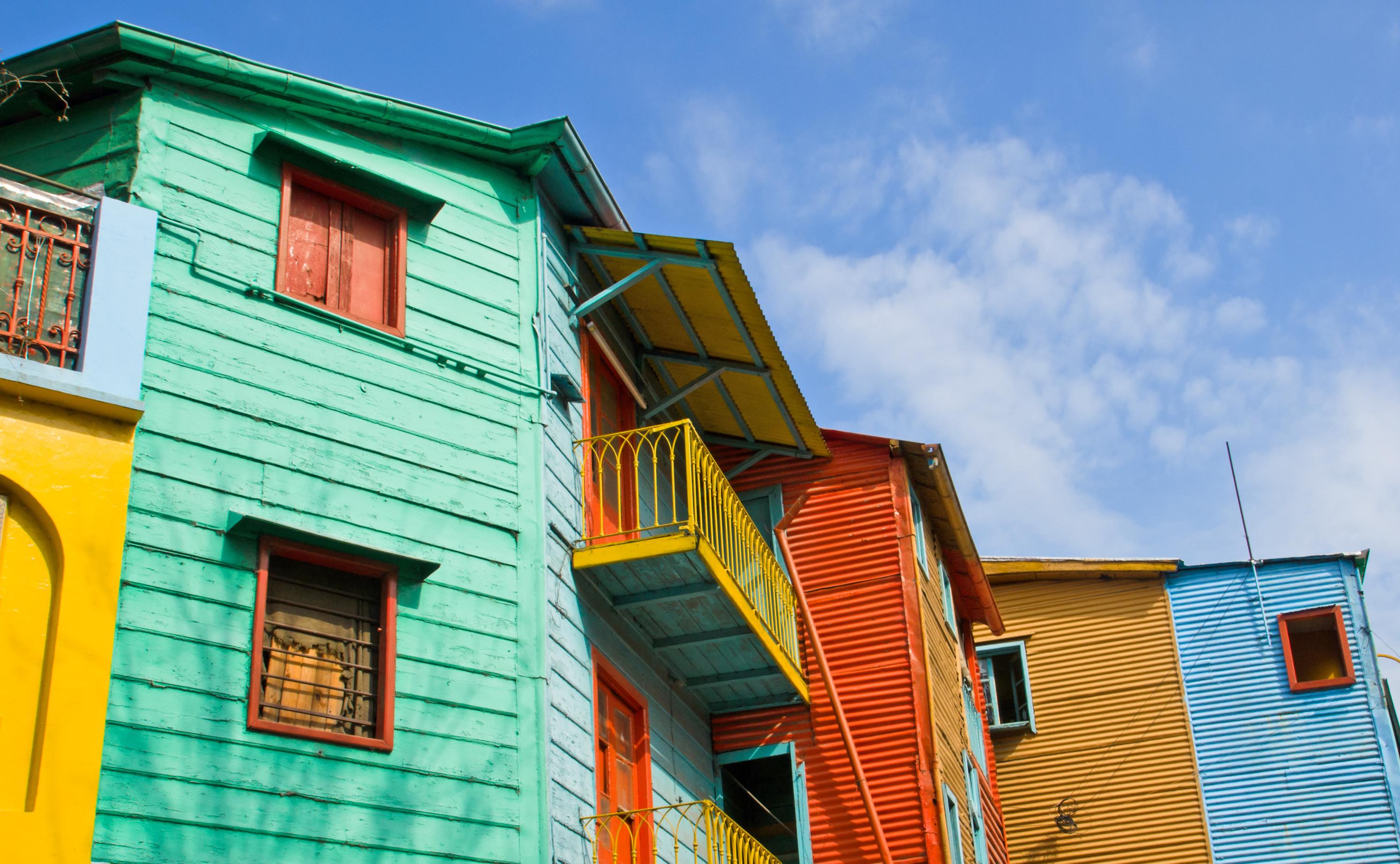
Nestled along the banks of the Riachuelo River, La Boca is one of Buenos Aires’ most vibrant and culturally rich neighborhoods. Here, bold reds, electric blues, sunny yellows, and deep greens splash across every building, creating a dynamic streetscape that feels like a living, breathing work of art. The story of La Boca’s colorful conventillos (tenement houses) begins with Italian immigrants, who arrived in the late 19th century and built their homes using scrap materials from shipyards—corrugated metal, wood, and anything else they could find. When it came time to paint, they used leftover paint from passing ships, leading to the haphazard, yet dazzling mix of colors that still defines the neighborhood today. At the heart of La Boca is Caminito Street, an open-air museum where street performers, painters, and tango dancers turn every day into a fiesta of music, movement, and creativity. This is a place where culture, resilience, and artistic expression come together, proving that color isn’t just about aesthetics—it’s about the spirit of the people who bring it to life.
6. Tobermory, Scotland – A Rainbow in the Hebrides
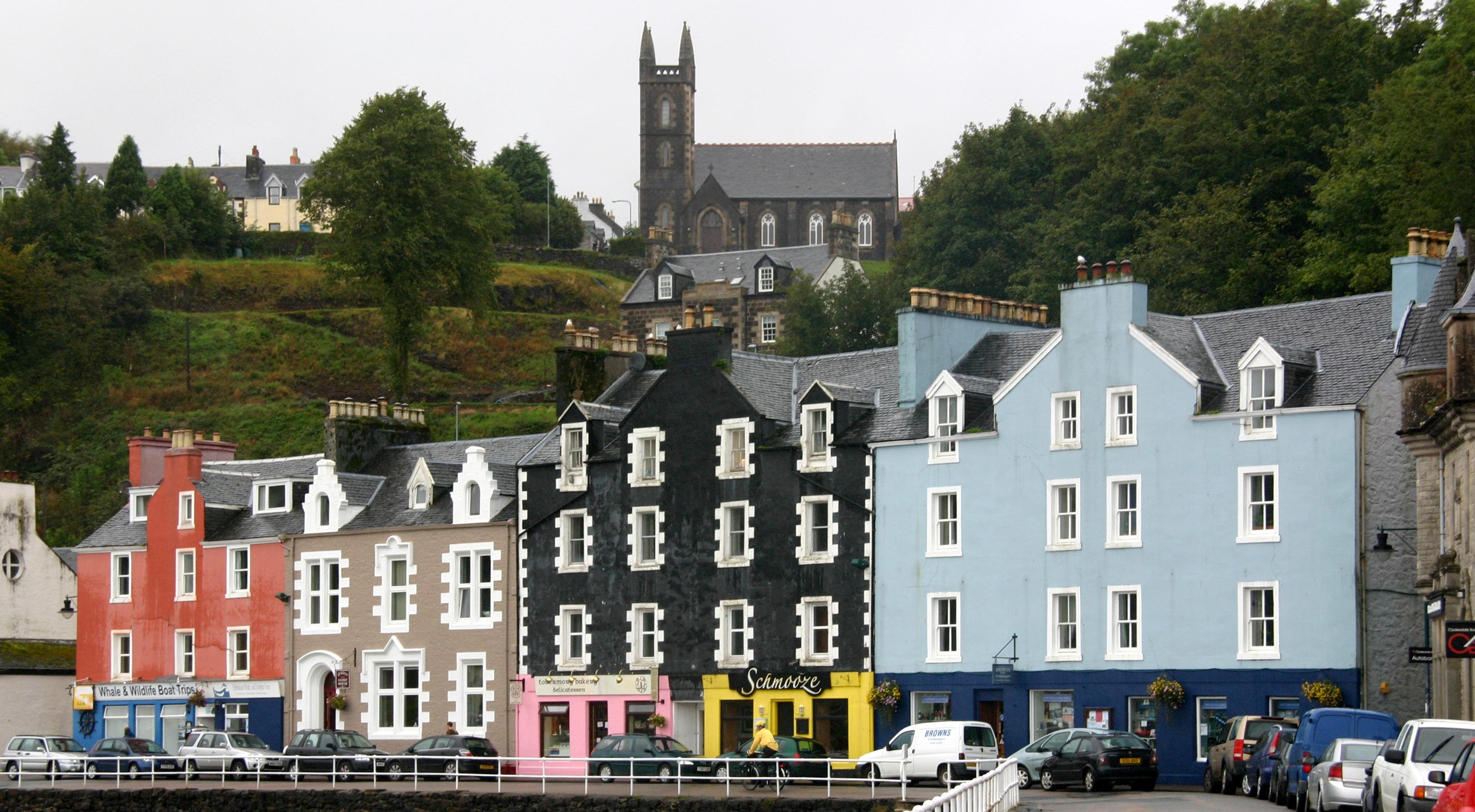
Nestled along the tranquil waters of Tobermory Bay, this quaint Scottish fishing village is known for its cheerfully painted waterfront, a stark contrast to the gray mist and rolling green hills of the Hebrides. Originally built as a fishing and trading hub in the 18th century, Tobermory quickly became one of Scotland’s most picturesque coastal settlements. The village’s signature row of brightly colored houses—painted in brilliant reds, sunny yellows, sky blues, and forest greens—was designed to help fishermen navigate home from sea, even on Scotland’s many stormy, overcast days. Today, this colorful backdrop provides a postcard-perfect view whether you’re standing at the harbor, looking down from the cliffs, or admiring it from a cozy waterside café. Beyond its storybook aesthetic, Tobermory is home to one of Scotland’s oldest whisky distilleries, as well as abundant wildlife, with seals, puffins, and even whales frequenting the nearby waters. Whether you visit for the colors, the culture, or the scenic landscapes, Tobermory remains one of Scotland’s most charming gems.
7. Valparaíso, Chile – The City of Murals and Color
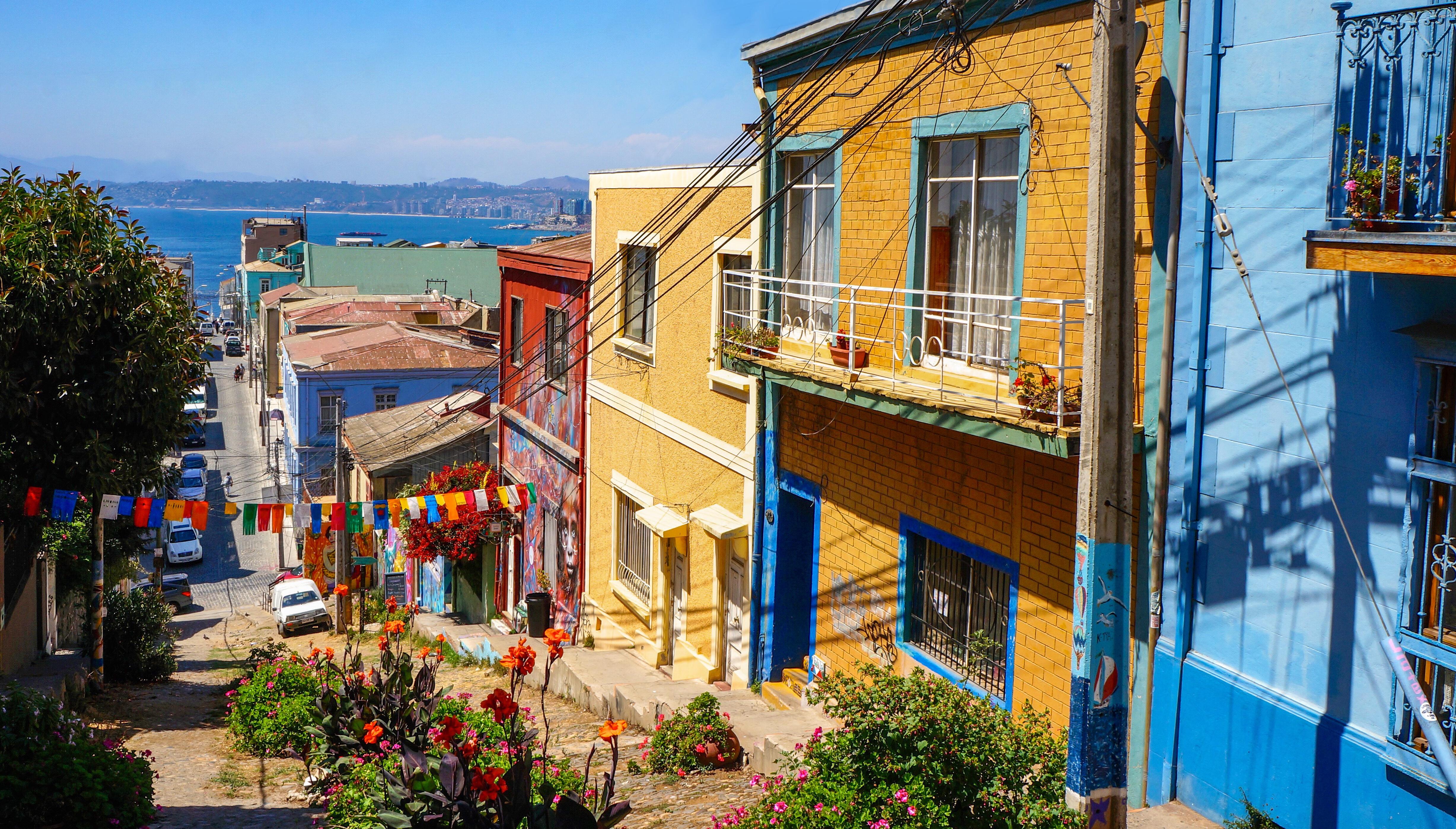
Nicknamed “The Jewel of the Pacific”, Valparaíso is a riot of color and creativity, cascading down steep hills that rise from the Chilean coast. What sets it apart from other coastal villages isn’t just its multicolored homes, but its seamless fusion of architecture and street art, where every wall, staircase, and alleyway is adorned with murals. Once one of the most important ports in South America, Valparaíso thrived during the 19th century, attracting European immigrants and artists who left their mark on the city. However, after the opening of the Panama Canal in 1914, the port’s economic importance declined. Instead of fading into obscurity, Valparaíso embraced its bohemian soul, becoming a haven for painters, musicians, and poets, including the legendary Pablo Neruda. Today, wandering through the city feels like stepping into an open-air museum, where funiculars rattle up the hills, cafés spill onto sunlit plazas, and artists add new layers to its vibrant walls. A UNESCO World Heritage Site, Valparaíso is a place where color isn’t just decoration—it’s a way of life.
8. Willemstad, Curaçao – A Caribbean Pastel Paradise
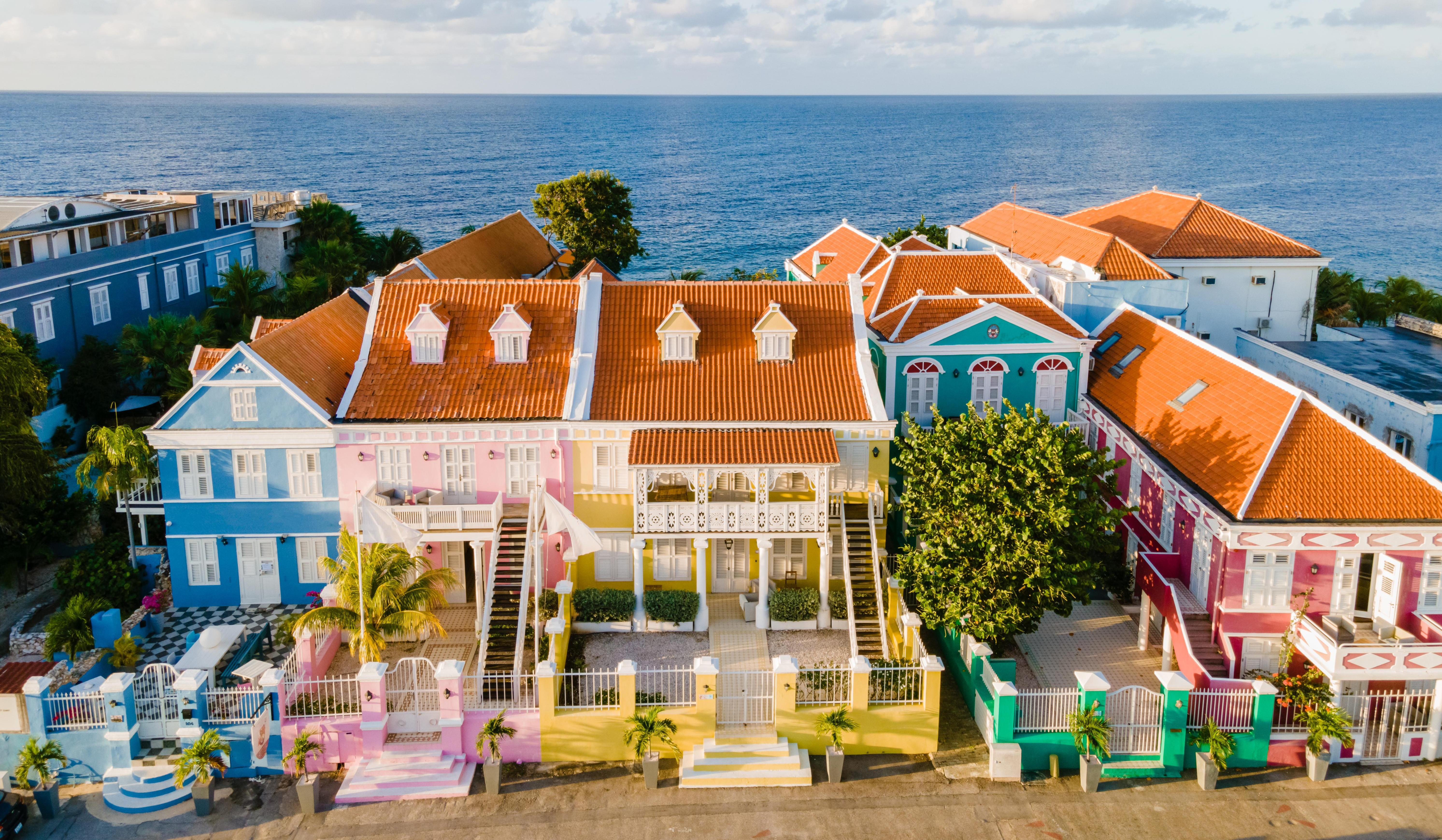
Few places in the Caribbean are as eye-catching and historically rich as Willemstad, the capital of Curaçao. With its Dutch colonial buildings painted in pastel shades of pink, yellow, blue, and green, Willemstad looks like a tropical version of Amsterdam, set against the turquoise waters of the Caribbean Sea. Legend has it that in the 19th century, a former governor of the island suffered from frequent migraines, which he blamed on the blinding effect of the sunlight reflecting off white buildings. To remedy this, he ordered that all houses be painted in bright colors, a tradition that has endured for generations. The city is divided into two halves—Punda and Otrobanda, connected by the Queen Emma Pontoon Bridge. Walking through Punda’s narrow streets, you’ll find colorful marketplaces, street art, and vibrant cafés, while Otrobanda offers stunning panoramic views of the rainbow-hued waterfront. With its mix of Caribbean culture, European architecture, and tropical energy, Willemstad remains one of the most visually stunning places in the world.
9. Portofino, Italy – A Harbor of Elegance
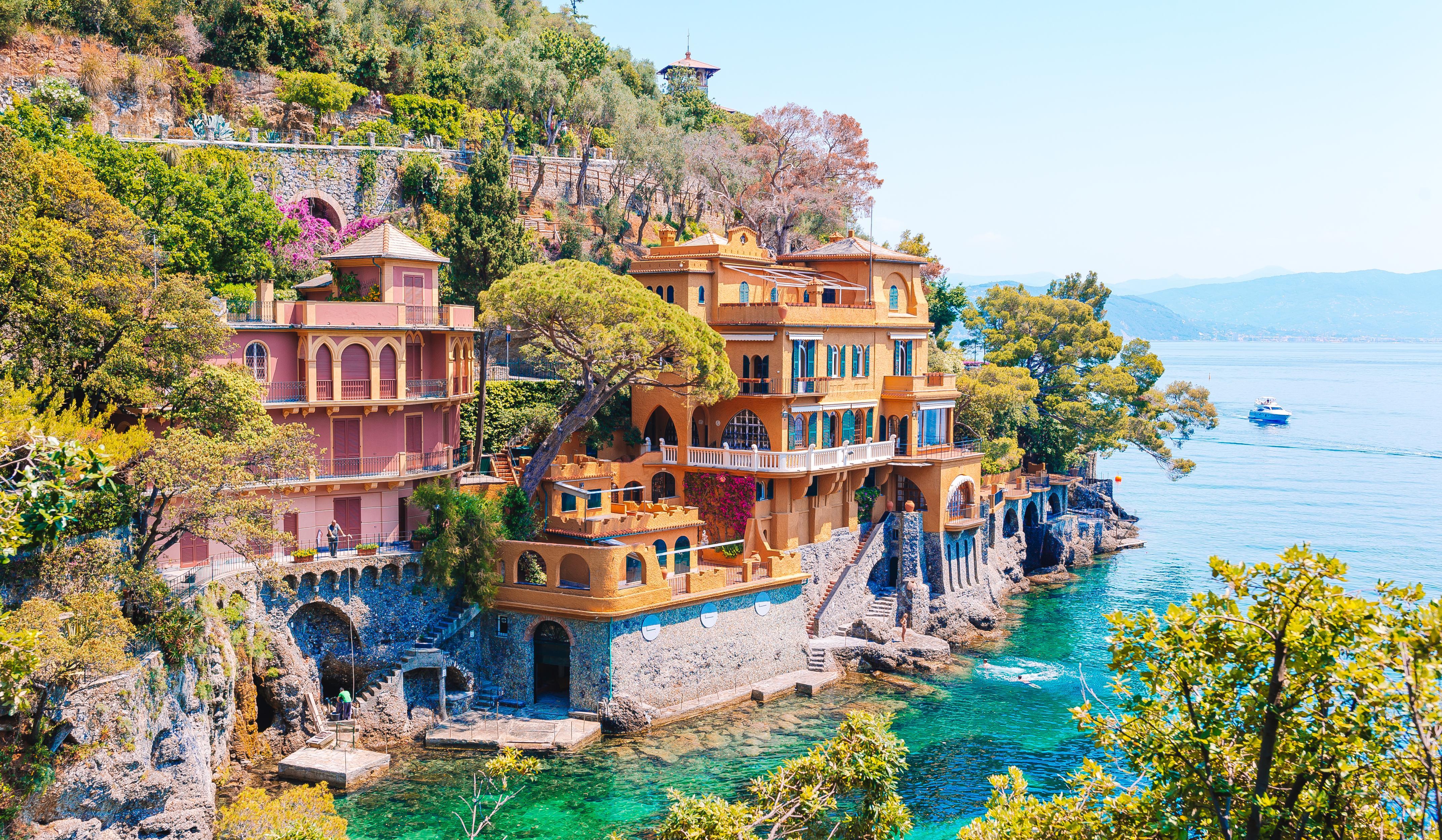
Tucked into a small, crescent-shaped harbor on the Italian Riviera, Portofino is the definition of Mediterranean charm. Unlike some of the other villages on this list, Portofino’s color palette leans toward warm, earthy tones—sun-faded reds, deep ochres, and muted oranges—all glowing under the golden Italian sun. Originally a simple fishing village, Portofino transformed into a luxurious seaside retreat in the 20th century, attracting Hollywood stars, writers, and artists seeking inspiration. Yet, despite its jet-set reputation, it has retained its quiet charm, with small fishing boats still bobbing in the harbor beside multi-million-dollar yachts. Visitors to Portofino can wander along its picturesque waterfront, explore the historic Castello Brown, or take a boat to the secluded San Fruttuoso Abbey. Whether sipping espresso in a charming café or hiking through olive groves with panoramic views of the Ligurian coast, Portofino remains an icon of understated elegance and seaside beauty.
10. Kampung Pelangi, Indonesia – The Rainbow Village

What was once a forgotten, nondescript village in Central Java has been transformed into a dazzling masterpiece of color and creativity. Kampung Pelangi, which translates to "Rainbow Village", underwent a stunning transformation when the local government launched a project to rejuvenate the area through vibrant art. More than 200 houses, schools, and bridges were painted in a kaleidoscope of colors, with geometric patterns, murals, and optical illusions adding to the surreal effect. What started as an effort to attract tourism has since turned into a global sensation, drawing visitors from all over the world. Travelers come not just to take Instagram-worthy photos, but also to experience the warm hospitality of the locals, who have embraced their village’s newfound fame. Businesses have flourished, with small cafés, souvenir shops, and street vendors benefiting from the influx of tourists. The village is a testament to how color can breathe new life into a place, reviving both its economy and community spirit.
11. Cobh, Ireland – The Deck of Cards

Perched along the rugged Irish coast, Cobh is a town steeped in history and maritime charm, famous for its row of brightly colored houses known as the "Deck of Cards". These homes, built on a steep hill, create a mesmerizing sight, their pastel blues, deep reds, and mustard yellows standing out against the dramatic backdrop of Cork Harbour. Beyond its stunning visual appeal, Cobh holds a hauntingly historic past—it was the last port of call for the Titanic before its ill-fated voyage. Today, visitors can explore the Titanic Experience Museum, housed in the original White Star Line ticket office, and walk the same pier where passengers once boarded the ship. Towering above the town, St. Colman’s Cathedral adds an air of grandeur to the scenery, its Gothic spires contrasting beautifully with the vibrant homes below. Whether you’re strolling along the waterfront, enjoying a traditional Irish pub, or simply admiring the view, Cobh is a place where color, history, and the sea merge into a breathtaking panorama.
12. Santorini, Greece – The White-and-Blue Wonder
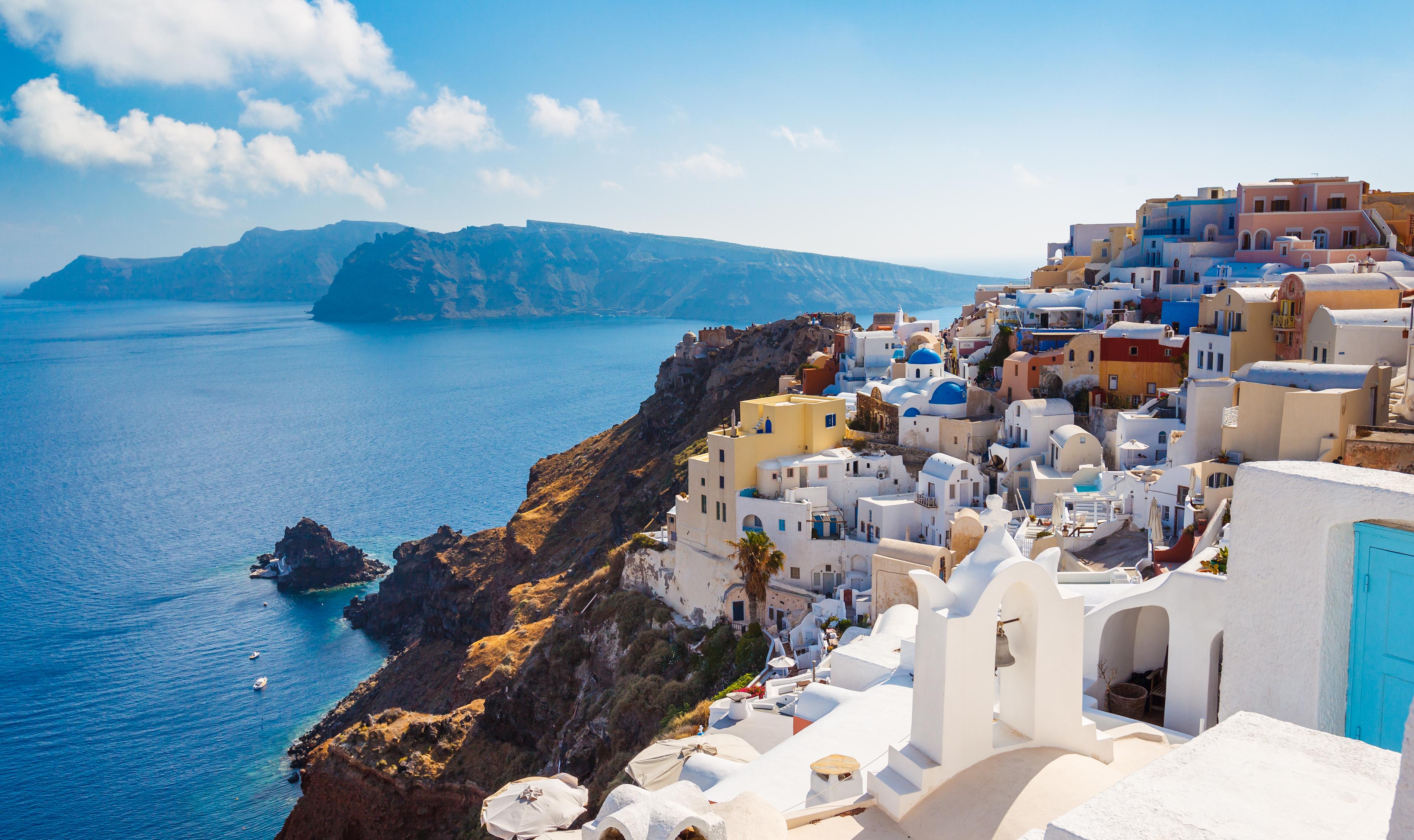
Few places in the world are as instantly recognizable as Santorini. While many coastal villages boast vibrant color palettes, Santorini’s beauty comes from its simplicity—dazzling whitewashed homes accented with cobalt blue domes and doors, all perched on the dramatic cliffs of a sunken volcanic caldera. The island’s signature colors date back centuries, originally chosen to reflect the intense Mediterranean sunlight and keep homes cool during the hot summer months. But beyond practicality, the stark contrast between the white facades, the deep blue sea, and the golden sunlight creates an almost ethereal quality, making Santorini one of the most photographed destinations on Earth. Wandering through the labyrinthine streets of Oia and Fira, you’ll find colorful bursts of pink bougainvillea, turquoise swimming pools, and vibrant market stalls selling hand-painted ceramics. Whether you’re watching the sunset from a cliffside terrace, sipping local Assyrtiko wine, or exploring the volcanic black sand beaches, Santorini is a place where color meets light in a truly magical way.
13. Nuuk, Greenland – A Colorful Arctic Oasis
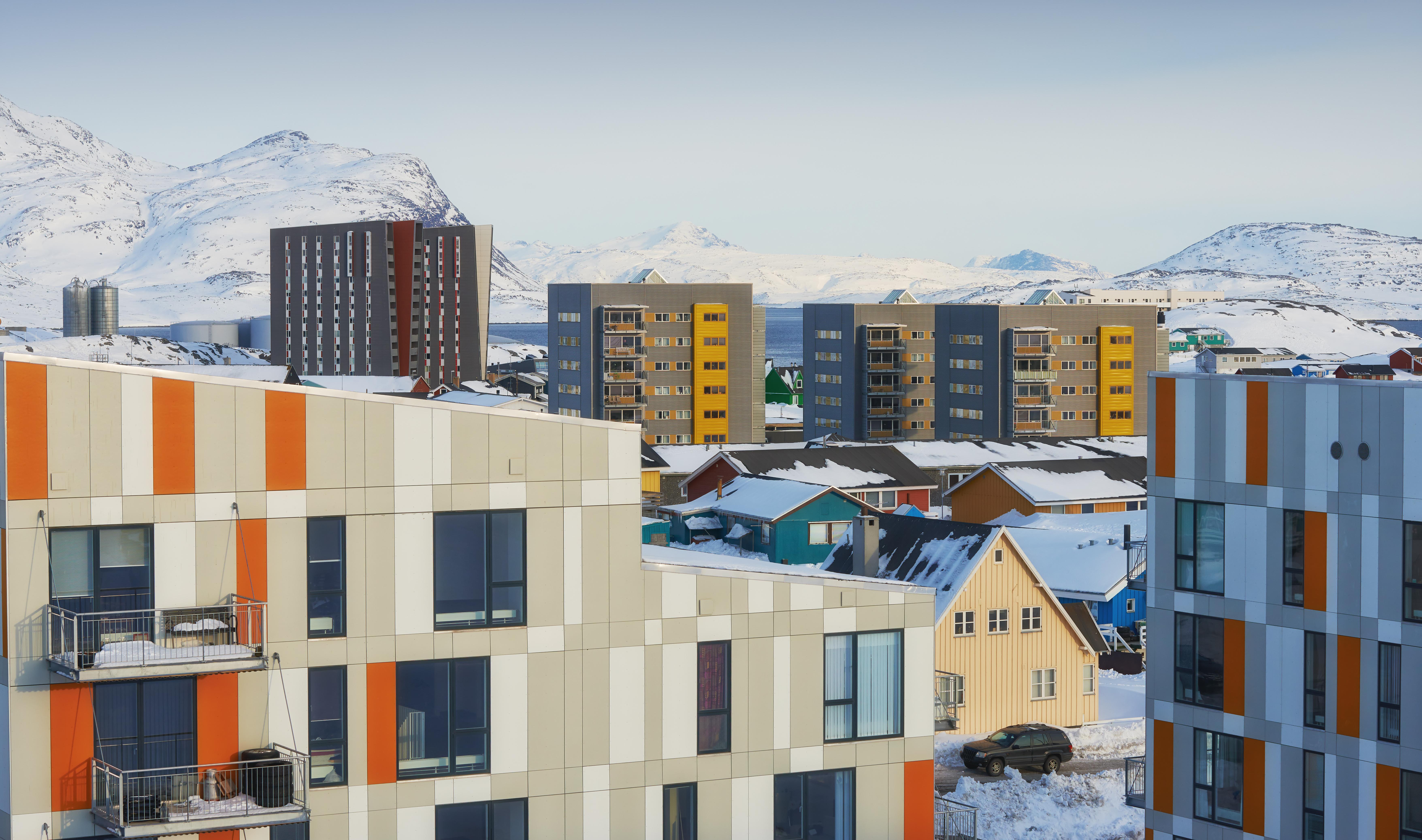
Greenland’s capital, Nuuk, may be small in size, but it bursts with color against the stark beauty of the Arctic landscape. Nestled between snow-capped mountains and the icy fjords of the North Atlantic, the town’s brightly painted wooden houses provide a striking contrast to the surrounding wilderness. Historically, the different colors of Nuuk’s buildings were not just decorative, but practical—each color once indicated the function of a structure. Red buildings housed commercial offices, yellow ones were hospitals, blue buildings were for fishermen, and green ones were reserved for telecommunications. Over time, the tradition evolved into a celebration of color and identity, turning Nuuk into a vibrant Arctic gem. Today, the town blends modern Scandinavian design with Inuit culture, featuring museums showcasing Greenlandic art, traditional kayaks, and carvings made from narwhal tusks. While Nuuk may be one of the most remote and isolated capitals in the world, its cheerful palette offers a warm embrace in an otherwise icy expanse.
14. Procida, Italy – The Hidden Gem of Naples
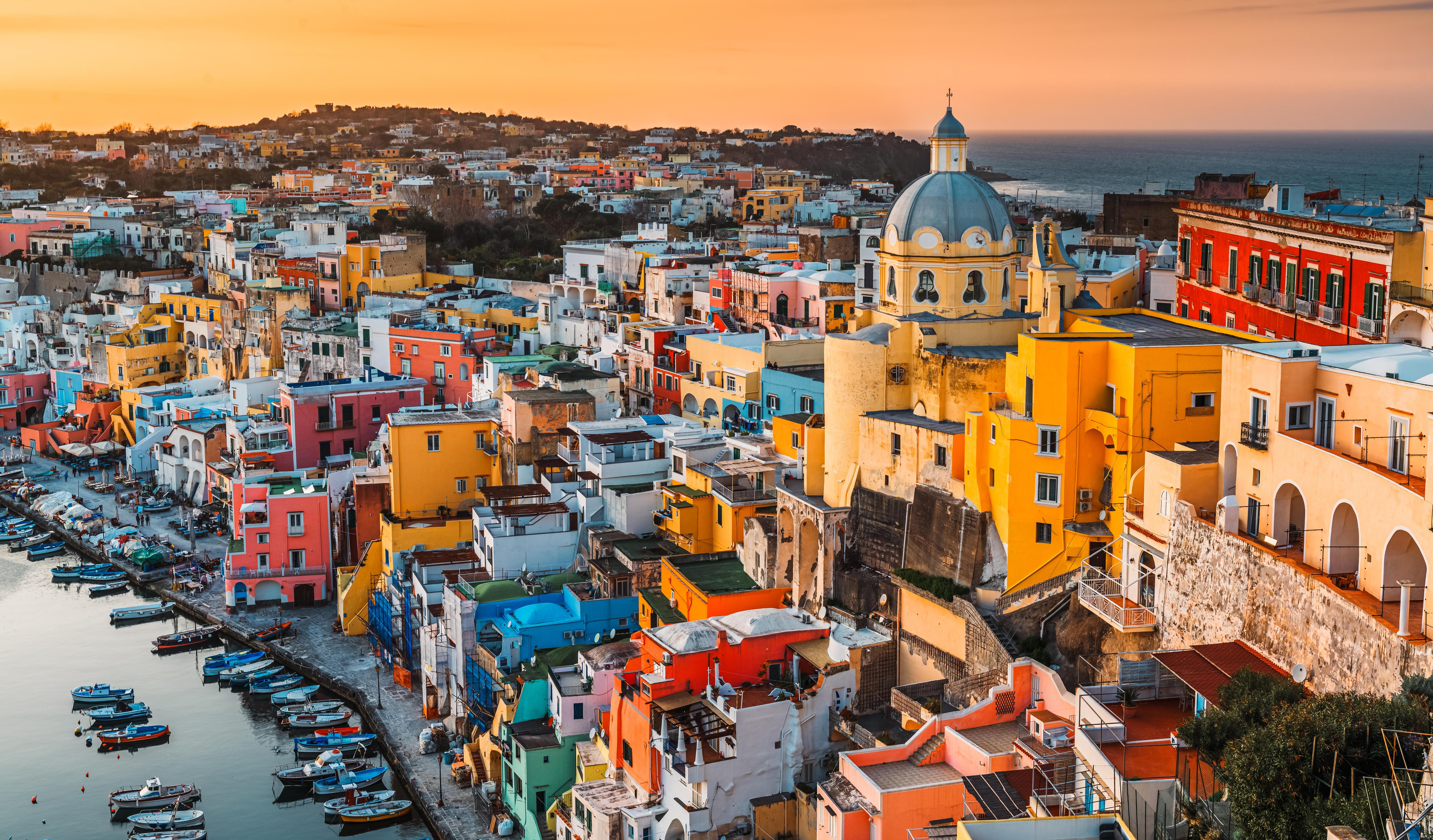
Less famous than its glamorous neighbors Capri and Ischia, the tiny island of Procida is a hidden jewel of the Mediterranean, where a riot of pastel-colored houses tumble down towards the sea. Unlike the polished luxury of the Amalfi Coast, Procida has retained its authentic fishing village charm, its sun-faded homes painted in hues of coral, mustard, blush pink, and sky blue. The reason for the island’s vibrant color dates back centuries—fishermen painted their homes in different colors so they could spot them from the sea when returning from long voyages. Today, this tradition has turned Marina di Corricella, Procida’s most famous harbor, into one of the most breathtaking coastal sights in Italy. Beyond its stunning visuals, Procida is a place to slow down and savor la dolce vita. No big resorts, no overcrowded streets—just quiet beaches, family-run trattorias serving the freshest seafood, and locals who still live life at the relaxed pace of the tides. It’s no wonder Procida was chosen as Italy’s Capital of Culture in 2022—it remains a place where time stands still, and the sea meets color in perfect harmony.
15. Ilulissat, Greenland – A Rainbow Among Icebergs
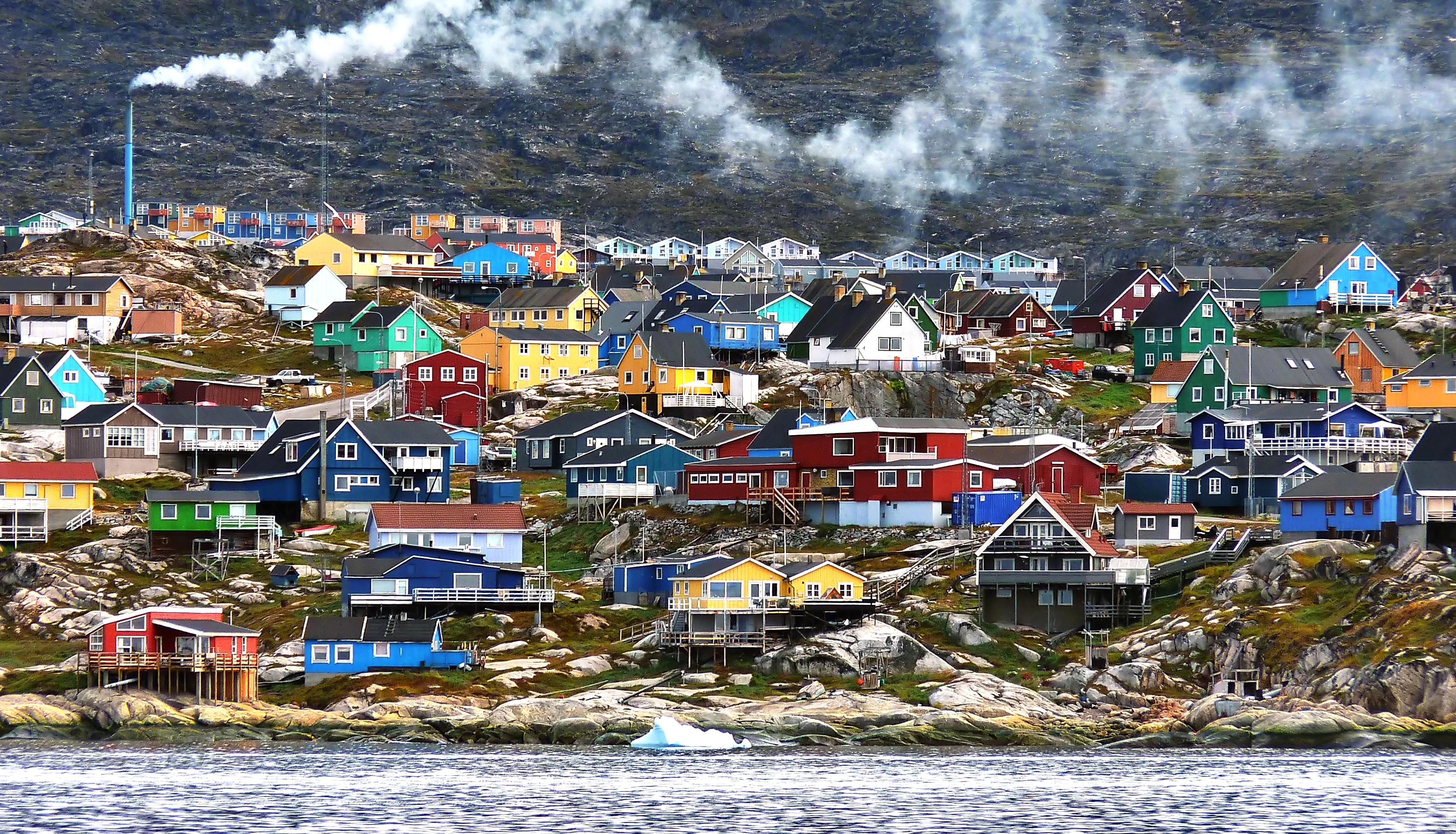
In the icy heart of Greenland, the coastal village of Ilulissat stands as a beacon of color against a frozen world. Here, brightly painted houses in shades of red, green, yellow, and blue perch along the shoreline, providing a vivid contrast to the floating icebergs that drift through Disko Bay. This color tradition, much like in Nuuk, was born out of necessity—to help people navigate through the long, dark winters. But beyond function, it has given Ilulissat an otherworldly beauty, where the dance of light on the ice creates a mesmerizing interplay of reflections and hues. Ilulissat is famous for its spectacular Icefjord, a UNESCO World Heritage Site where enormous icebergs break off from one of the world’s most active glaciers. Whether you’re kayaking among the ice floes, watching the midnight sun paint the sky in shades of pink and gold, or simply standing at the edge of the Arctic, Ilulissat feels like a dreamscape where color and nature collide in the most extraordinary way.
16. Campeche, Mexico – A Colonial Kaleidoscope

Campeche, a UNESCO World Heritage city on Mexico's Yucatán Peninsula, is a vibrant tapestry of colonial architecture painted in a dazzling array of pastel hues. Unlike the more tourist-heavy Cancún or Playa del Carmen, Campeche retains a strong sense of its history as a fortified port city. Wander through its cobblestone streets, admire the beautifully restored colonial mansions in shades of ochre, turquoise, and rose, and explore the ancient city walls that once protected it from pirates. The blend of Spanish colonial architecture with Mayan influences, all splashed with Caribbean color, creates a unique and captivating atmosphere.
17. Setúbal, Portugal – A Seafood Lover's Palette
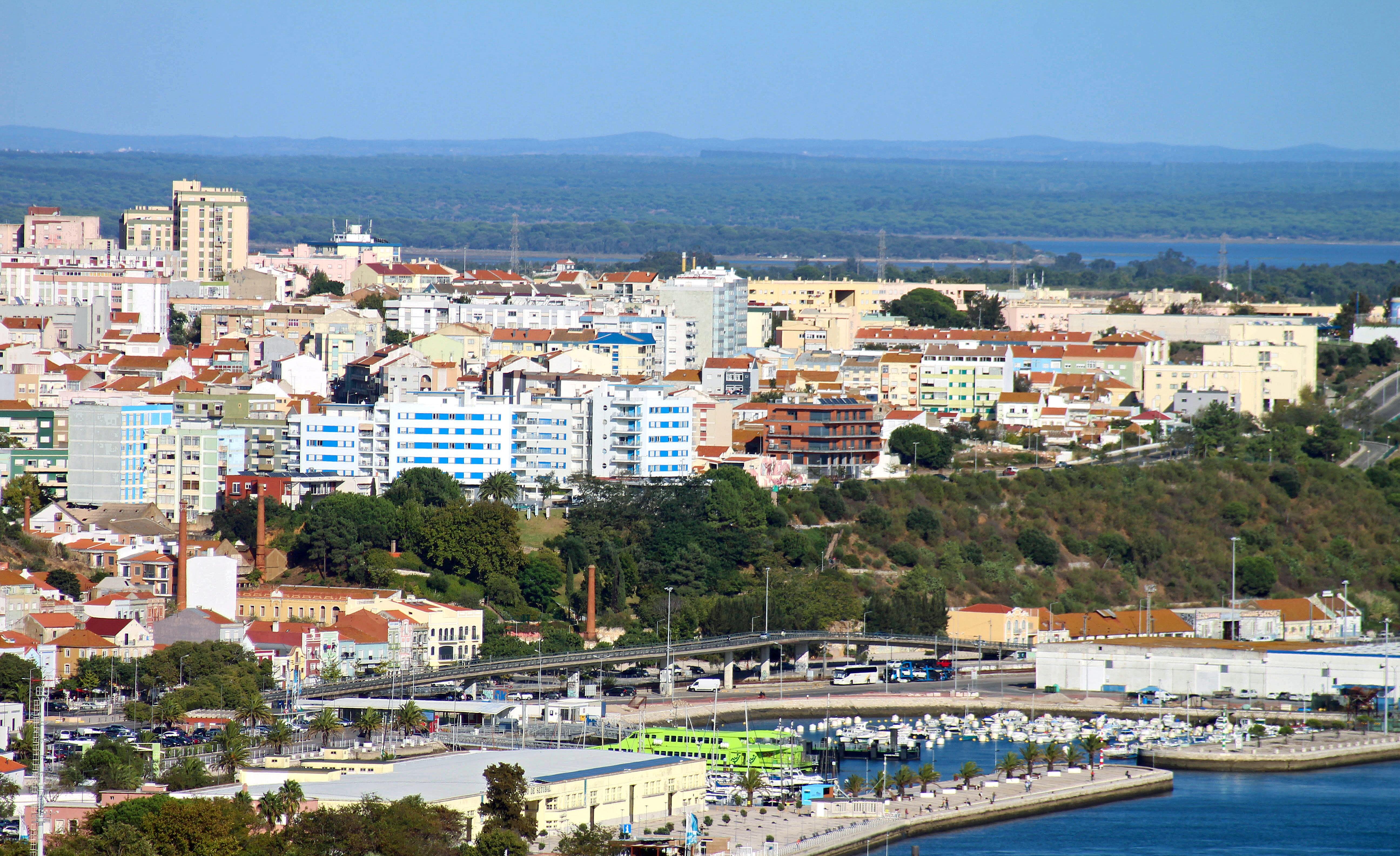
South of Lisbon lies Setúbal, a bustling port city with a colorful character rooted in its thriving fishing industry. While not as overtly "picture-postcard" as some other villages, Setúbal's charm lies in its authentic, working-class vibrancy. Expect to see buildings painted in functional yet cheerful blues, greens, and yellows, reflecting the maritime spirit. The real draw is the bustling fish market, a riot of sights and smells, and the abundance of seafood restaurants serving the freshest catches. Setúbal offers a taste of real Portuguese coastal life, where color signifies community and the bounty of the sea.
18. Longyearbyen, Svalbard, Norway – Arctic Hues Against White
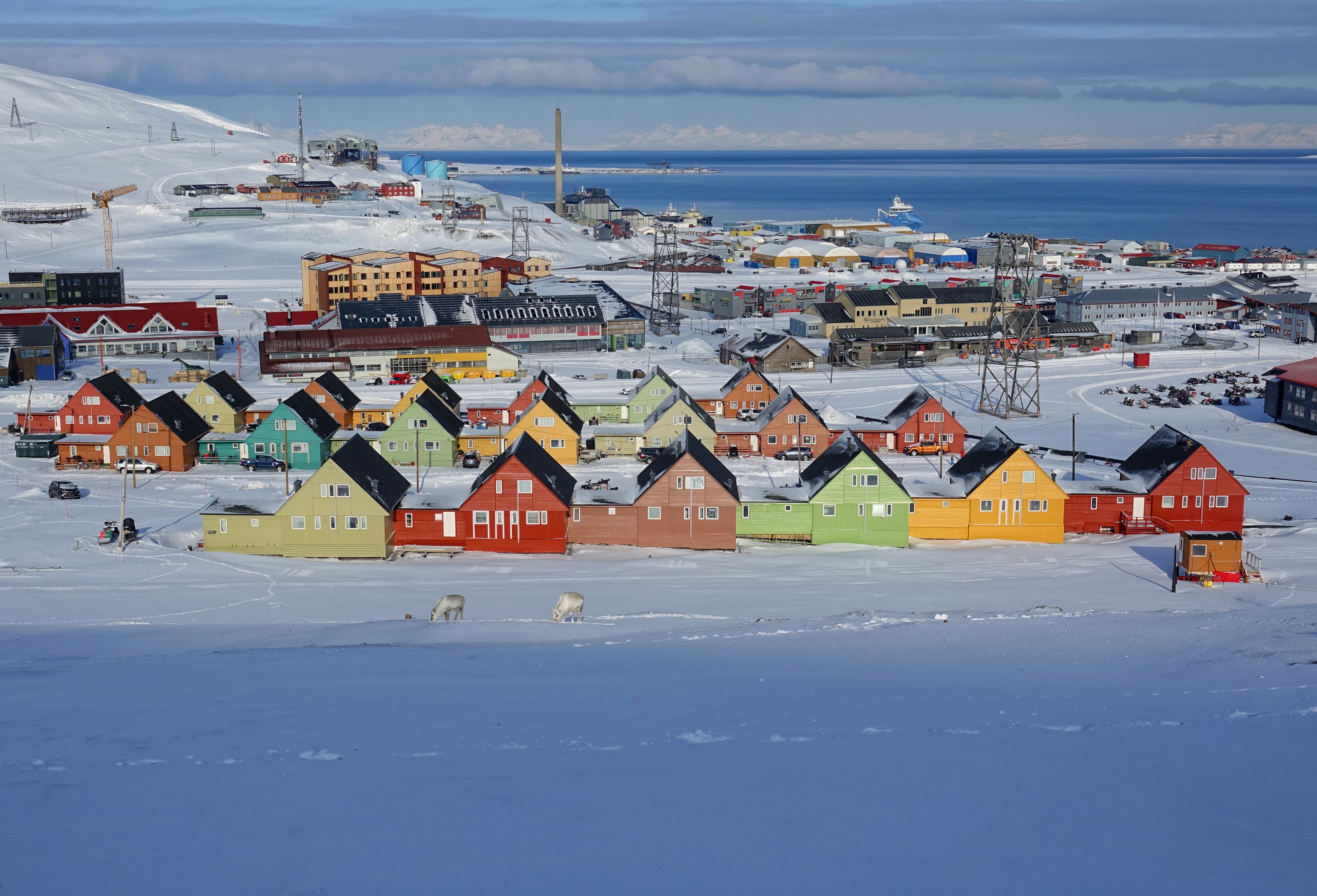
In the high Arctic, Longyearbyen, the world's northernmost settlement with a permanent civilian population, offers a unique take on colorful coastal living. Against the stark white and blue of the Svalbard landscape, the town's wooden houses are painted in surprisingly bright shades of red, yellow, green, and blue. This isn't just for aesthetics; the vibrant colors provide a visual contrast in the often-monochromatic environment, especially during the long winter months. Explore the fascinating history of coal mining, encounter reindeer roaming freely through the streets, and marvel at the vast, icy wilderness surrounding this resilient and colorful outpost.
19. Lunenburg, Nova Scotia, Canada – A Maritime Mosaic
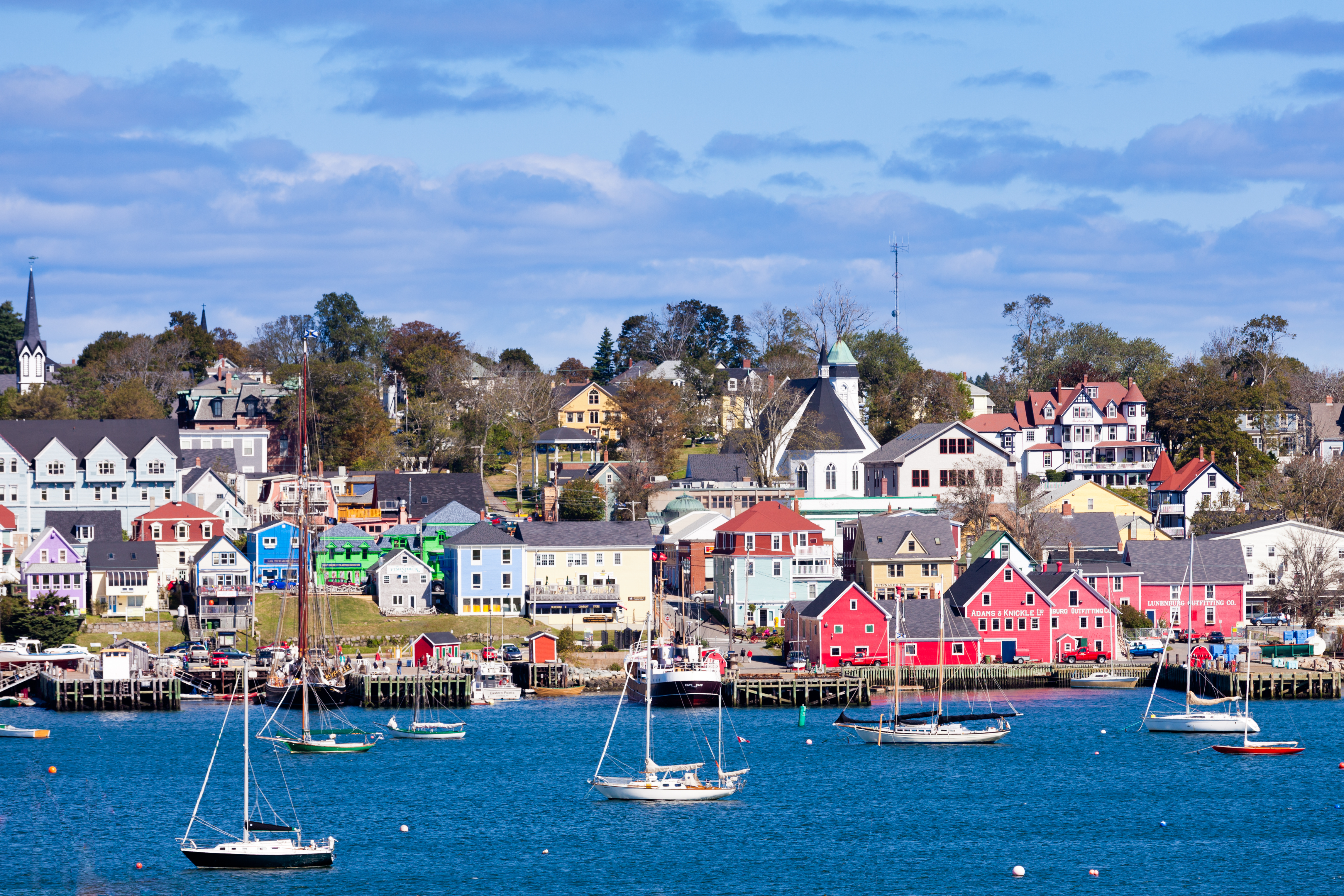
Lunenburg, a UNESCO World Heritage town in Nova Scotia, is a picturesque example of a well-preserved British colonial settlement, its waterfront a charming display of colorful wooden houses reflecting in the harbor. Painted in traditional maritime hues of red, white, blue, and yellow, these buildings house fishing fleets, artisan shops, and cozy restaurants. The town's unique architectural style, a blend of British and North American influences, adds to its visual appeal. Explore the historic Bluenose II schooner, a symbol of Canadian maritime heritage, and soak in the authentic seafaring atmosphere of this vibrant and colorful town.
20. Vernazza, Cinque Terre, Italy – Emerald Hills, Vibrant Homes
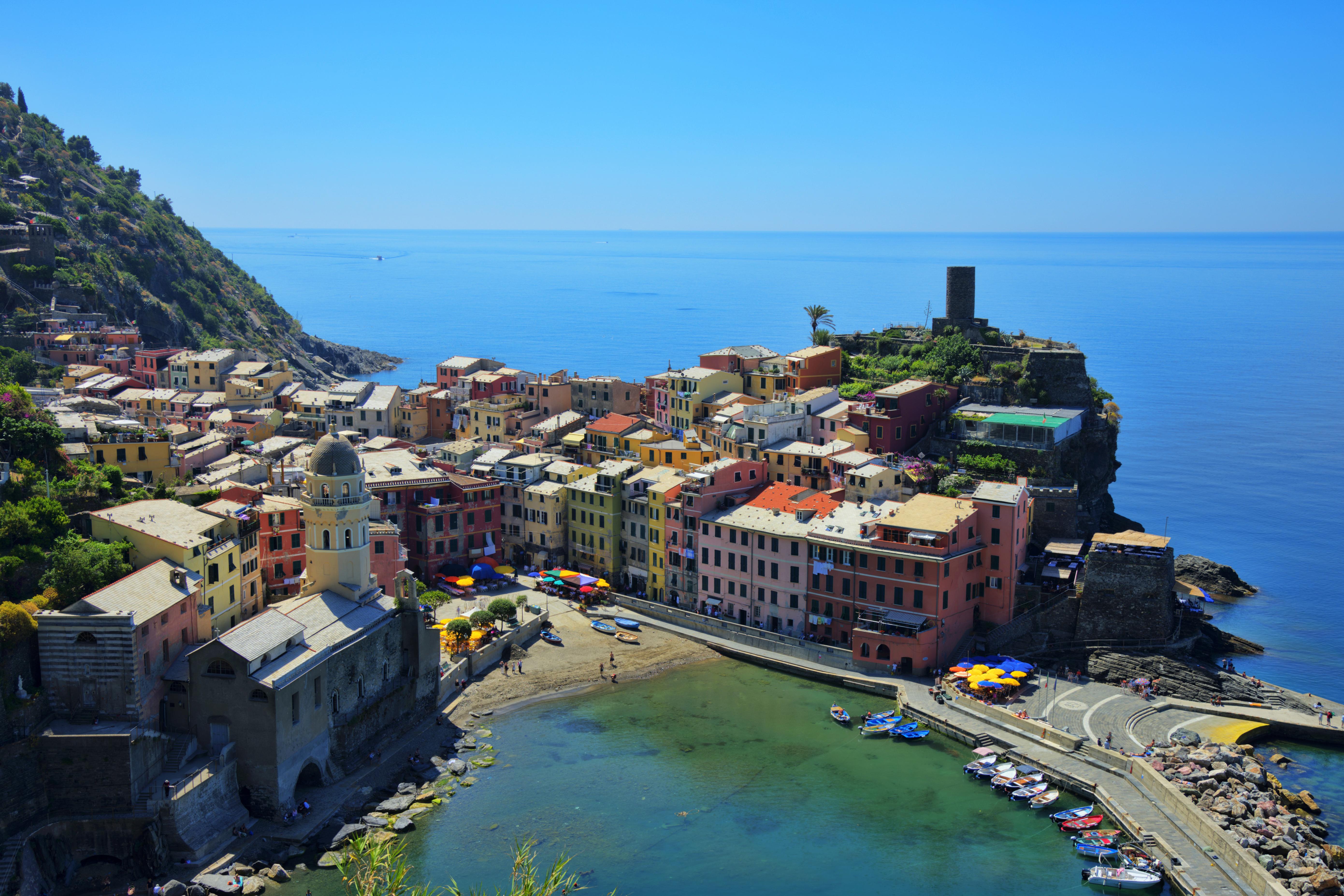
While all five villages of Cinque Terre are colorful, Vernazza often stands out for its particularly picturesque harbor and the way its brightly painted houses cascade down the steep hillside towards the emerald Ligurian Sea. The tradition of painting homes in vibrant yellows, pinks, and oranges helped fishermen identify their dwellings from the water. Today, Vernazza's car-free streets invite leisurely exploration, leading to stunning viewpoints, charming cafes, and the iconic Doria Castle overlooking the village. The harmonious blend of the colorful architecture with the natural beauty of the coastline makes Vernazza an unforgettable visual treat.
21. Seyðisfjörður, Iceland – Fjords of Color

Nestled deep within a stunning Eastfjords fjord, Seyðisfjörður is a charming Icelandic town known for its brightly colored wooden houses that line the waterfront. Surrounded by towering mountains and cascading waterfalls, the town's cheerful red, blue, yellow, and green buildings create a welcoming contrast to the dramatic natural landscape. Seyðisfjörður has a strong artistic and cultural scene, hosting various festivals and boasting a unique creative energy. Explore the town's art galleries, hike the surrounding trails offering breathtaking fjord views, and experience the warm hospitality of this colorful and captivating Icelandic gem.
22. Trinidad, Cuba – A Step Back in Time
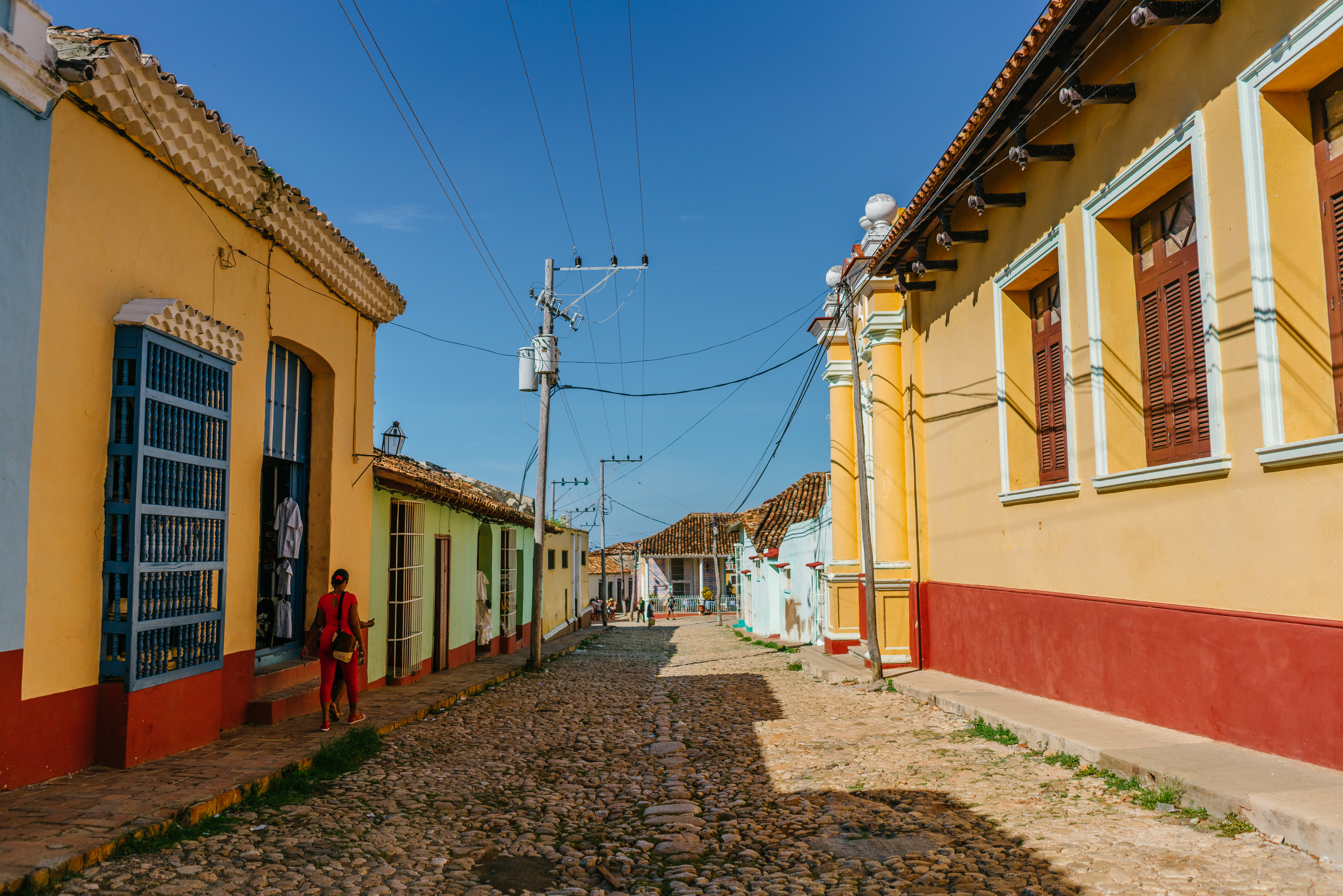
While not directly on the coast, Trinidad, a UNESCO World Heritage city in Cuba, is close enough to the Caribbean Sea to be considered a colorful coastal influence, its well-preserved colonial architecture painted in a spectrum of pastel shades. The cobblestone streets and grand plazas are lined with houses in hues of terracotta, sky blue, and sunshine yellow, transporting visitors back to the 19th century. The vibrant colors reflect the city's rich history as a center for sugar production and trade. Explore the historic center, enjoy live Cuban music, and take a short trip to the nearby Playa Ancón, a beautiful stretch of Caribbean coastline.
23. Symi, Greece – Neoclassical Rainbow

The island of Symi, part of Greece's Dodecanese archipelago, is a visual feast of elegantly restored neoclassical mansions painted in a stunning array of ochres, terracottas, blues, and pinks. These grand houses, rising tier upon tier from the harbor, create a breathtaking panoramic view. Unlike the whitewashed Cycladic islands, Symi boasts a distinct architectural style reflecting its prosperous past in shipbuilding and trade. Explore the charming harbor town, wander through the narrow streets leading to the upper village (Ano Symi), and soak in the sophisticated yet relaxed atmosphere of this colorful Greek gem.
24. Chefchaouen, Morocco – The Blue Pearl

Nestled in the Rif Mountains, Chefchaouen, with its iconic blue-washed buildings, offers a mesmerizing visual experience. While not directly on the sea, its proximity and cultural connection to the coast (historically a refuge for Andalusian Muslims) make it a worthy inclusion. The varying shades of blue, from pale sky to deep indigo, create a tranquil and almost surreal atmosphere. Wander through the labyrinthine alleys, discover local artisan shops, and enjoy the unique charm of this "Blue Pearl" of Morocco. The tradition of blue washing is believed to have originated with Jewish refugees who settled here in the 15th century, the color symbolizing the sky and heaven.
25. Flores, Guatemala – Island of Color

Perched on an island in Lake Petén Itzá, Flores is a vibrant and colorful town connected to the mainland by a causeway. Its terracotta-roofed houses are painted in a cheerful mix of yellows, oranges, pinks, and blues, creating a striking contrast with the deep blue of the lake. Once a Mayan city, Flores offers a blend of history and natural beauty. Explore its narrow streets, enjoy the lakeside views, and use it as a base to visit the magnificent Mayan ruins of Tikal nearby. Flores's island setting and vibrant architecture make it a unique and captivating colorful destination.
The Beauty of Colorful Coastal Villages
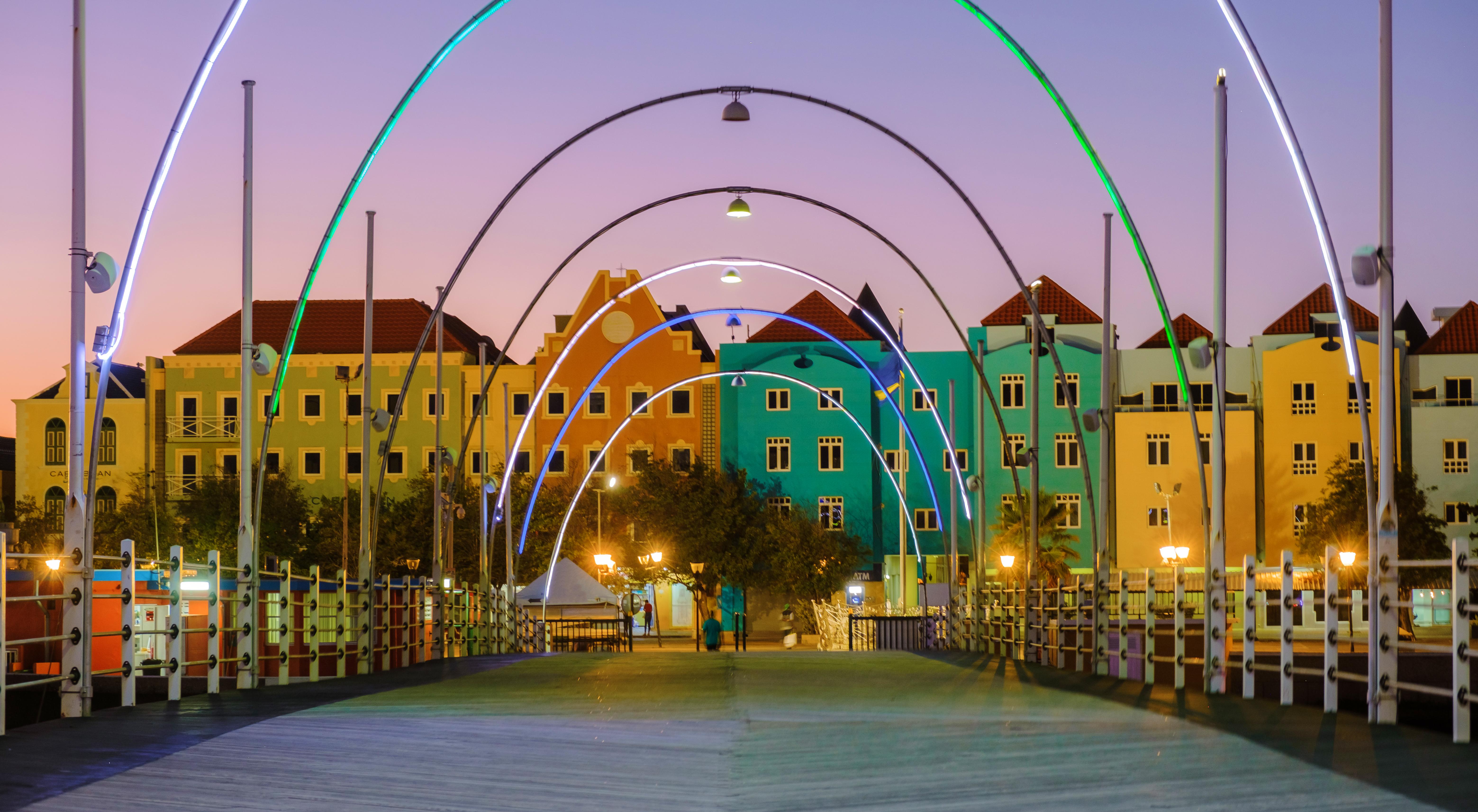
From the candy-colored homes of Burano to the dramatic cliffside villages of Cinque Terre and the historic vibrancy of Nyhavn, these coastal gems prove that color is more than just aesthetics—it’s a reflection of culture, history, and way of life. Each of these villages has its own unique story, shaped by maritime traditions, artistic inspiration, and a deep connection to the sea. Beyond their Instagram-worthy facades, these places offer an invitation to slow down, soak in the atmosphere, and appreciate the beauty of human creativity harmonizing with nature. Whether nestled against the rolling waves of the Mediterranean, reflecting in Venetian canals, or glowing under the Scandinavian summer sun, these colorful villages remind us that the world is a richer, more beautiful place when painted in bold, joyful hues. As travelers, exploring these colorful coastal escapes isn’t just about seeing them—it’s about experiencing the vibrant life within them.








